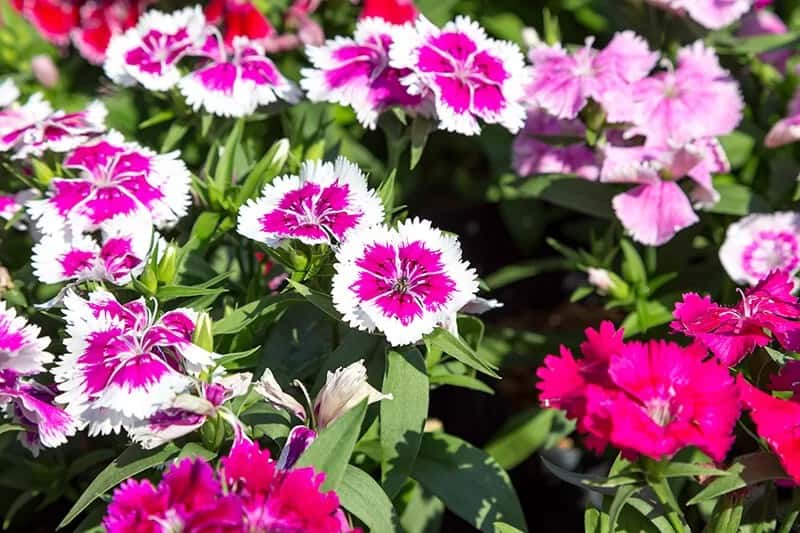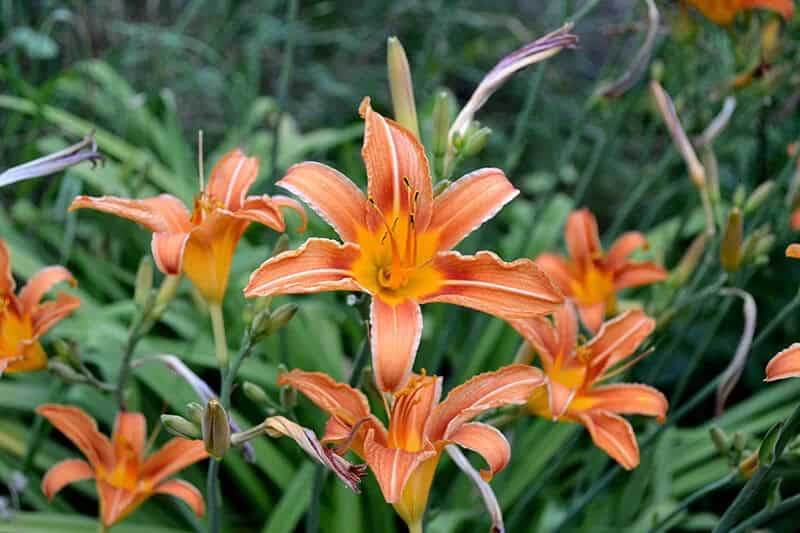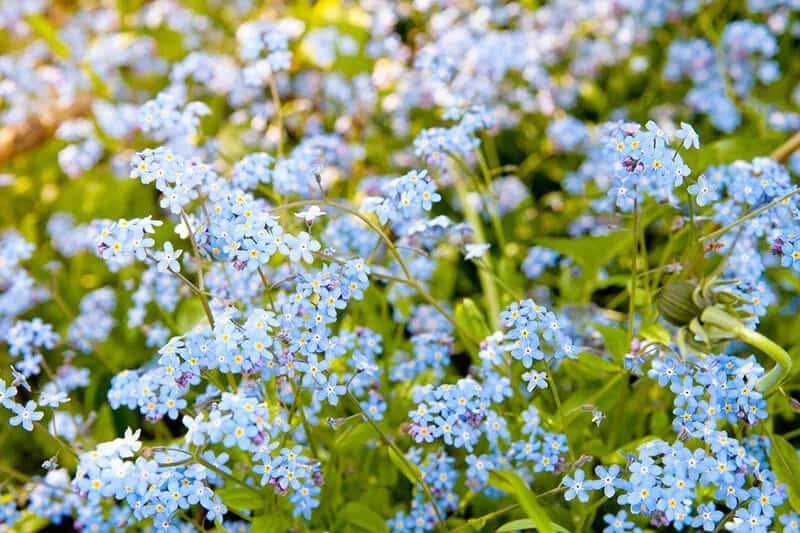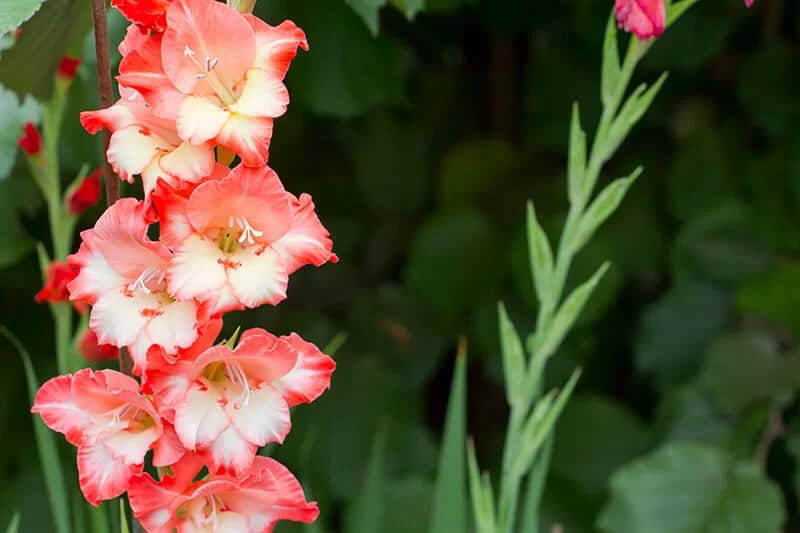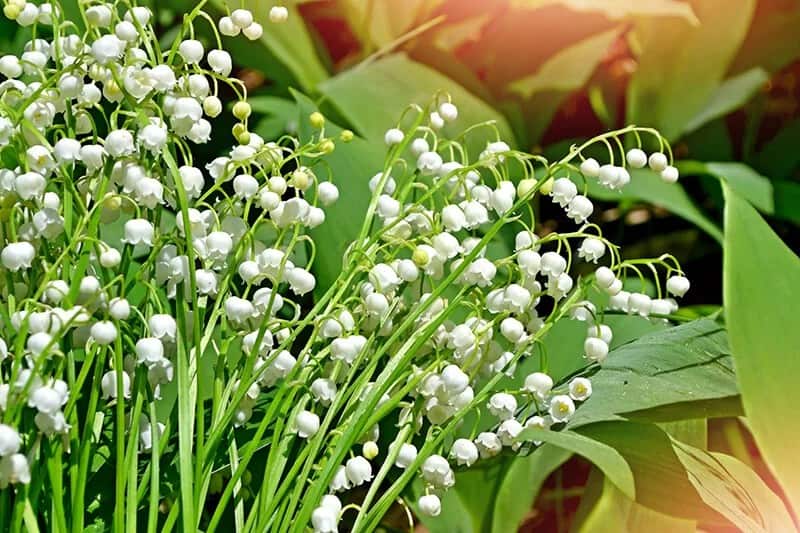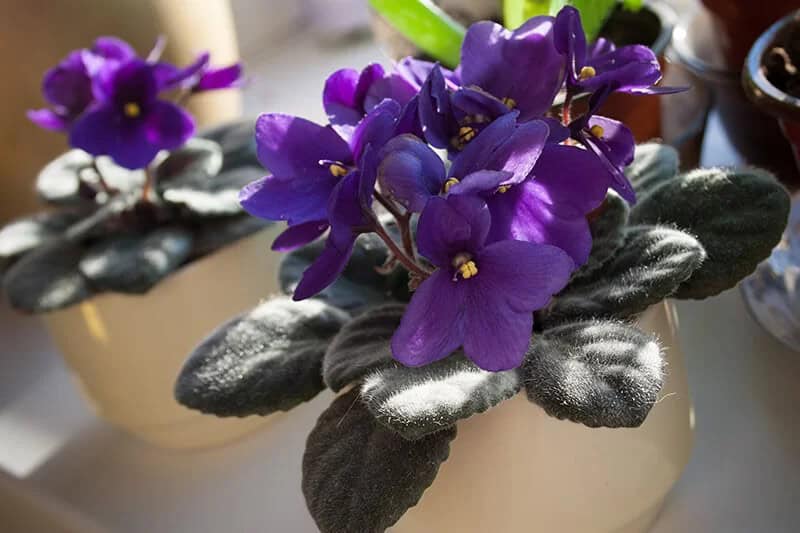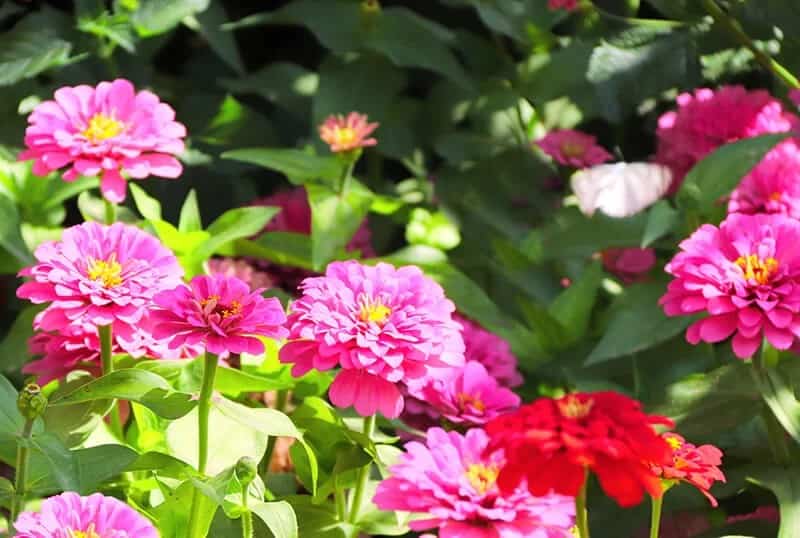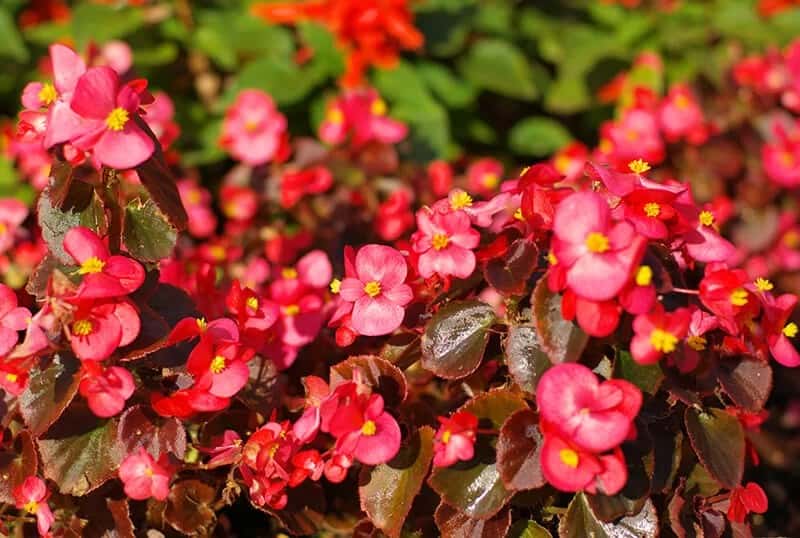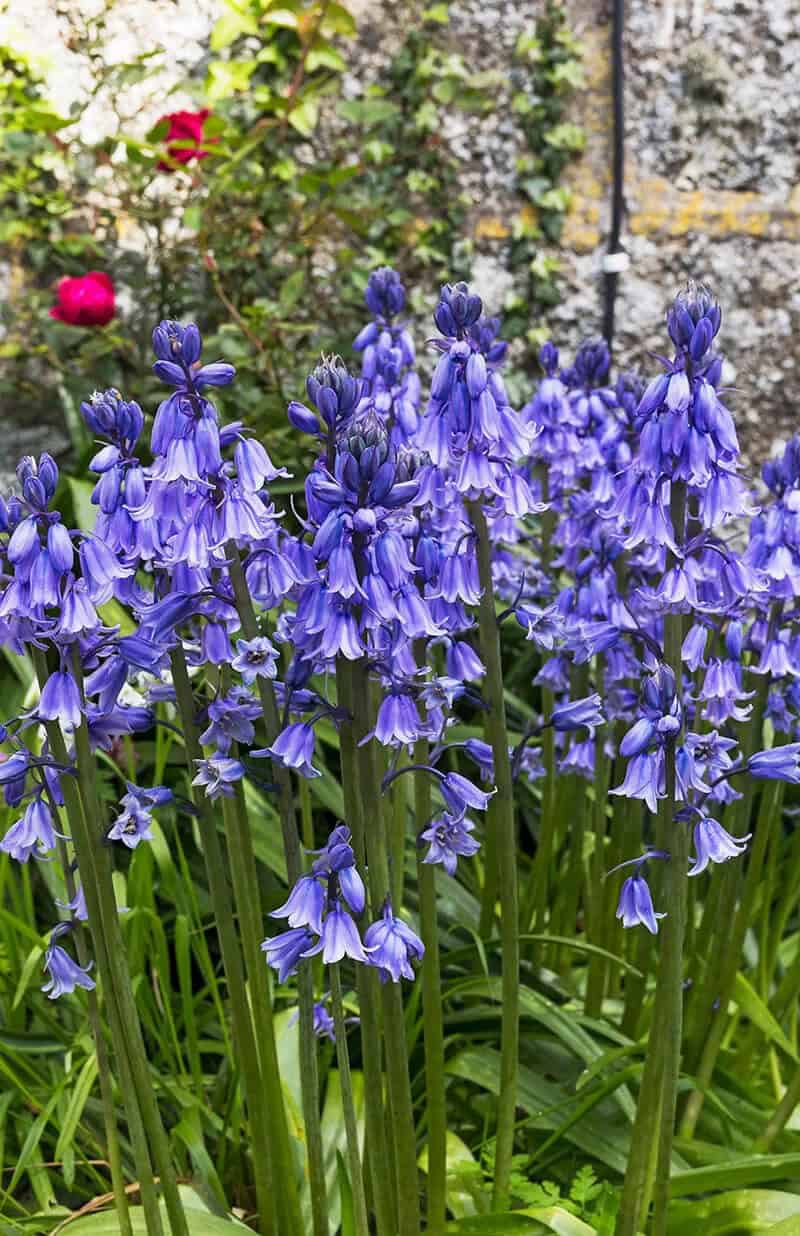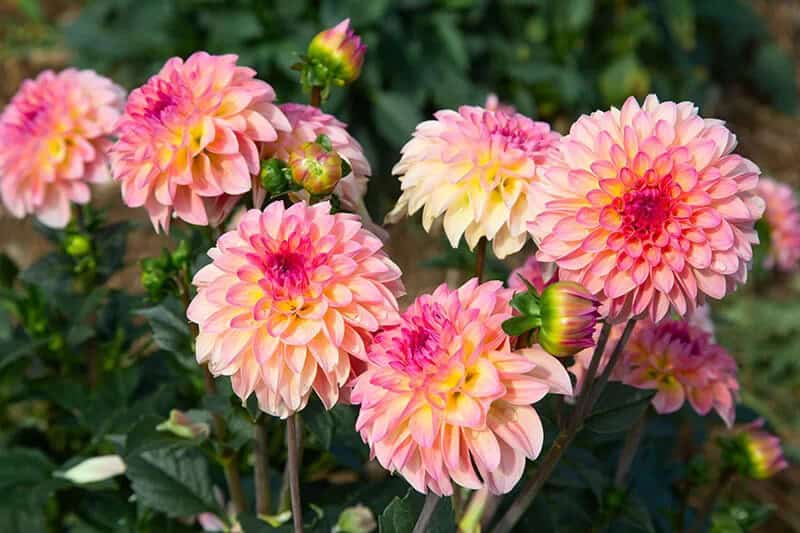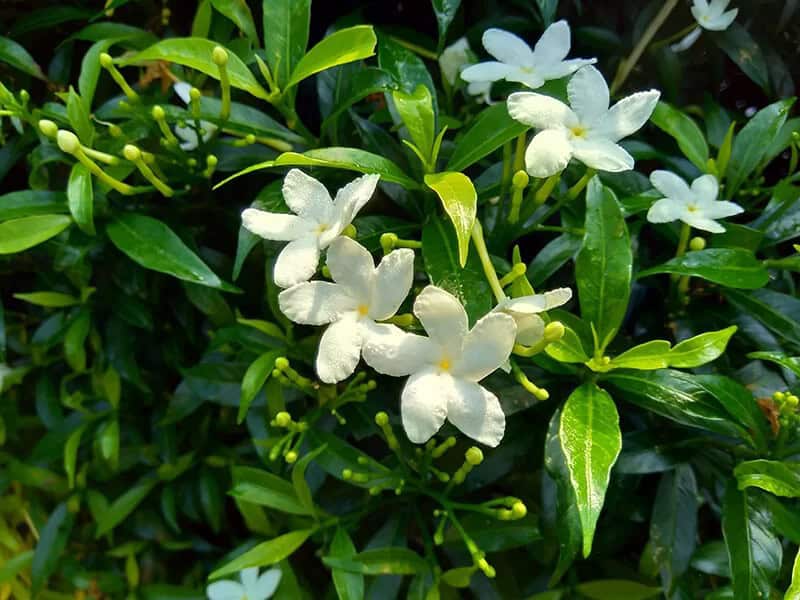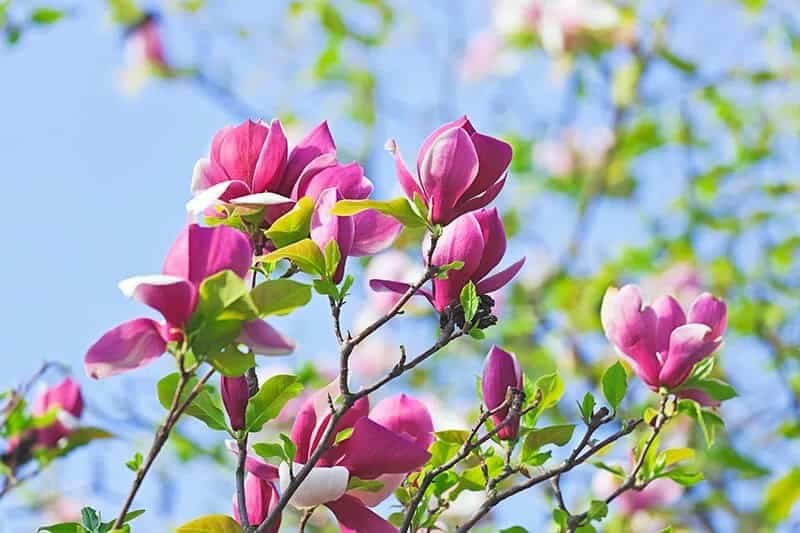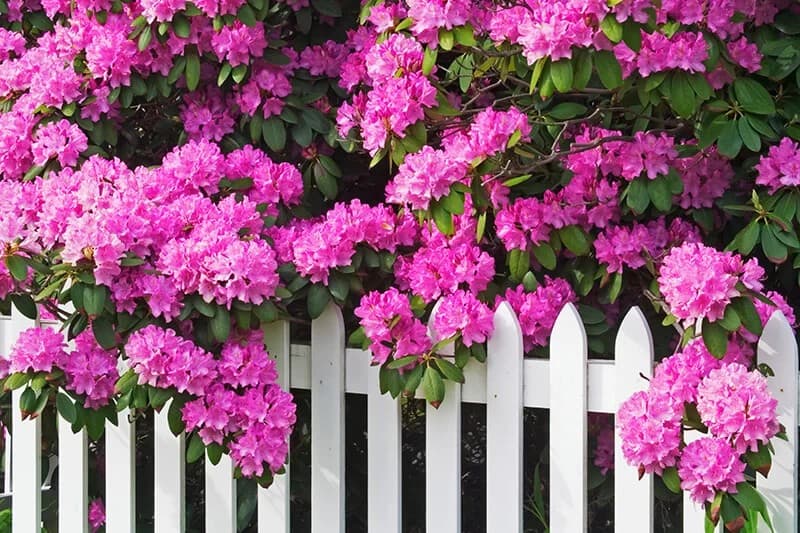While it’s undeniable that people have a special affinity for beautiful blooms, the reality is that flowers can cater to a wide range of tastes and purposes. Whether you’re just starting out with gardening as the seasons transition or seeking inspiration for what to add next, there’s always a flower that can meet your specific needs.
The 20 Best Flowers and Their Meanings to Create Personalized Bouquets With
In a bygone era, when etiquette and refinement reigned supreme, flowers became a means of silent communication, transcending linguistic barriers to convey complex emotions and subtle nuances.
Amaryllis (Hippeastrum)
The Amaryllis flower, characterized by its striking red-tipped petals with cream centers and vibrant red streaks where the leaf’s veins are, exudes strength and determination through its symbolism. This resilient plant thrives in well-drained potting soil and partial sunlight, making it an ideal addition to any garden. Its minimal water requirements mean it can sparely absorb moisture, allowing for a more controlled growth.
Native to USDA growing zones 9-10, the Amaryllis blooms from December to May, providing a delightful splash of color during the colder months. With its strong stem and bold colors, this flower is not only a visual treat but also represents a sense of pride and unyielding spirit.
Aster (Symphyotrichum)
The aster flower, with its delicate appearance and soft pastel hues, exudes a charming elegance. This small yet striking bloom has been imbued with symbolism, representing wisdom, faith, and valor due to its celestial connection. The name ‘aster’ itself is derived from the Greek word for ‘star’, in reference to the flower’s star-shaped petals.
When grouped together, the pale purple blooms with yellow centers and dark green stems create a visually appealing display that can be used to complement larger flowers in the garden. In terms of care, asters require well-drained soil and partial to full sunlight. They also benefit from regular watering, ideally once a week, provided there has been less than an inch of rainfall. The ideal growing zones for these lovely flowers are 3 to 9.
Dianthus (Dianthus)
The Dianthus, often referred to as ‘Pinks’, has long been associated with love and affection. Its symbolism extends beyond romantic gestures, also signifying gratitude and admiration when given as a gift. This vibrant flower, characterized by its striking fuchsia color and delicate white borders, adds a pop of color to any garden in the early spring months.
With a compact size that won’t overpower more majestic plants, the Dianthus thrives in well-drained soil with good circulation, requiring minimal watering only when the soil is dry. Its light needs are straightforward: full sunlight for optimal growth. This hardy flower blooms from March to August, making it an ideal addition to gardens in zones 4 to 9.
Daylily (Hemerocallis)
The Calendula officinalis is often associated with the sacrifices, devotion, and love that mothers demonstrate towards their children. Its unique symbolism has led it to become a popular choice for bouquets celebrating motherly love. The flower’s characteristics include its light orange hue, streaked with an even lighter orange in the center of each petal, as well as burnt umber markings that create a striking visual effect upon closer inspection.
When it comes to growing conditions, this flower is surprisingly adaptable, thriving in full sun and tolerating poor soil, although it prefers well-drained and fertile soil enriched by compost. In terms of water requirements, Calendula officinalis benefits from regular watering, especially if there has been less than an inch of rainfall within a week. Its growing zones range from 4 to 9, making it a suitable choice for gardeners across various regions.
As for blooming seasons, this flower typically flowers from March to October, providing a long period of colorful blooms.
Forget-Me-Nots (Myosotis Scorpioides)
The forget-me-not flower is often associated with sentimental occasions due to its symbolic meaning of remembrance, love, and cherished memories. Its tiny, delicate blooms feature five rounded petals and a soft yellow center, marked by subtle white details, which provide a striking contrast against the lush green foliage of surrounding plants. This low-growing, baby-blue beauty is adaptable to various soil conditions, thriving in neutral pH environments.
With a growing range spanning zones 5-10, it requires partial sunlight and moderate watering throughout the season, typically blooming from March to August. As a symbol of endearing memories, the forget-me-not can be a thoughtful addition to your garden, adding a touch of whimsy and charm to its surroundings.
Gladiolus (Gladiolus)
The Gladiolus is a striking and resilient flower that stands out from others with its tall, slender stems bearing numerous blooms. This symbol of strength, willpower, and determination thrives in well-drained, moderately fertile soil that has been loosened and tilled. In order to maintain optimal growth, this flower requires full sunlight and can be expected to bloom from June to August.
While it’s often associated with red hues, the Gladiolus comes in a range of vibrant colors, some featuring striking edge-to-center color gradations that add visual interest to any garden. Interestingly, this hardy flower is also notable for its ability to grow well in zones 8 to 11 and can survive on just one inch of rainfall per week.
Hibiscus (Hibiscus Syriacus)
The hibiscus is a stunning addition to any garden, bringing a pop of vibrant color and delicate beauty. Its symbolism is rooted in fragility, reflecting the flower’s subtle yet striking appearance. For optimal growth, this plant requires thorough watering, well-draining soil, and partial to full sunlight. With a growing zone range of 5 to 9, it thrives in temperate climates. The blooming season typically spans June to October, showcasing its stunning colors.
While the bright red variety is particularly striking, hibiscus flowers can also be found in shades of orange, yellow, pink, and even gradient hues on their ruffled petals.
Hydrangea (Hydrangea)
Hydrangeas, often thought of as simply beautiful blooms, hold a secret: they can be used to convey gratitude. In Victorian times, this symbolism was commonplace, with hydrangea flowers being cut from bushes and added to bouquets to express appreciation for being understood. Alternatively, the stems could be included in arrangements to subtly signal heartlessness.
This impressive shrub has another notable characteristic – its ability to produce multiple colors from a single plant.
The color of the bloom depends on the soil’s pH level, allowing hydrangea bushes to display soft pink, gentle blue, and even pastel purple hues.
Delphinium (Delphinium)
These stunning flowers, characterized by their vibrant colors and tall stature, can be challenging to cultivate, making their growth all the more remarkable when seen as a symbol of goodwill, protection, encouragement, and remembrance for loved ones who have passed away. With their ability to thrive in well-drained soil with added compost, they do particularly well in alkaline environments, tolerating partial to full sunlight and growing zones ranging from 3 to 7.
Watering them once a week, provided there has been less than an inch of rainfall, is crucial for their survival. The blooming season typically spans from June to August, during which time rows of beautiful blue flowers burst forth, showcasing a range of hues from deep blues to lighter shades that draw the eye upwards and away from the ground.
Lily of the Valley (Convallaria Majalis)
The tiny, delicate flowers known for their symbolism of happiness, innocence, and purity have a profound impact on the emotions they evoke. Despite being named after lilies, these unique blooms belong to the asparagus family. Notably, each plant produces multiple flowers with a downward-facing bell shape, featuring pale-white petals and light-green stems. When grown in well-drained soil with added compost, they thrive in shade to partial sunlight, making them ideal for zones 3 to 7.
As a bonus, their blooming season from March to August adds a pop of color to an otherwise darker garden, providing a beautiful contrast and softening the overall aesthetic.
Peony (Paeonia)
🌼 Peonies have long been synonymous with happiness and joy, with Marco Polo’s ancient accounts describing the blossoms as ‘roses as big as cabbages’. The delicate petals, often layered in dozens of thin layers, make them a striking addition to any garden. Not only do they bring vibrancy through their range of colors – from soft pastels like the ones pictured here, to vibrant hues – but they also provide an edible treat for those who appreciate the symbolism.
Requiring deep-seated, fertile, humus-rich and well-draining soil to thrive (🪴), peonies flourish in zones 3-8 (🌍) when exposed to full sun ☀️. Their blooming season typically spans March to August 🌱. And for those looking for a thorough watering 💧, these flowers are sure to bring joy and satisfaction as they grow thoroughly, reflecting the symbolism of happiness that has surrounded them for centuries.
African Violet (Streoptocarpus sect. Saintpaulia)
The African violet’s symbolism is deeply rooted in loyalty, devotion, and faithfulness, making it an ideal gift to show your appreciation for someone special. To keep these houseplants thriving, they require regular watering with room-temperature water that maintains a lightly moist soil. A well-drained potting soil rich in organic matter also helps ensure the plant’s overall health.
As for growing conditions, African violets do best in zones 11 to 12, and partial sunlight is necessary for optimal blooming. One of the most unique aspects of these plants is their year-round blooming season, allowing you to enjoy their beauty throughout the entire year. Interestingly, while unrelated to traditional violets, African violets share a similar symbolism with the birth flower of February, making them an excellent choice for a thoughtful gift.
With their delicate purple petals, tiny yellow stamens, and soft velveteen leaves, these plants are sure to bring a touch of the garden into your home. As each plant can produce multiple blooms simultaneously, you’ll have a stunning kitchen centerpiece that’s reminiscent of a lush garden.
Zinnia (Zinnia Elegans)
The symbolism behind the vibrant zinnias lies not only in their bright colors but also in their ability to evoke remembrance and thoughts of friends who are absent. This poignant association may stem from the flowers’ cheerful nature, allowing those who miss their friends to cherish fond memories. With their striking hues spanning from pure whites to deep crimson, zinnias bring a tropical flair to any garden.
Characterized by layers of thin, elongated petals that unfurl from the center and stack atop one another, these blooms appear robust despite their slender stems. In terms of cultivation, zinnias thrive in well-draining soils with moderate moisture levels, tolerating a range of soil types but performing optimally in organic matter-rich soil. They require full sunlight to bloom, typically between June and October.
This annual’s growing zones are 8 to 11, making it an ideal choice for gardeners residing within these regions.
Begonia (Begonia)
The begonia, with its striking white or red petals, is a flower steeped in symbolism. While it may appear inviting at first glance, the Victorian era’s flower language reveals that it actually conveys messages of caution and bad luck when used outside of expressing gratitude. In reality, only two types are depicted here, offering a glimpse into the vast array of colors this four-petaled flower exhibits.
When grown in a bush-like manner, begonias add a pop of color to any garden, with leaves ranging from warm brown tones to deep green hues. This juxtaposition of colors further highlights the complexity and intrigue surrounding these flowers.
English Bluebell (Hyacinthoides Non-scritpa)
The enchanting appearance of these flowers, reminiscent of a whimsical forest, evokes a sense of wistfulness and longing when presented as a gift. Symbolically, they convey humility, gratitude, and eternal love. The striking bell-shaped blooms are characterized by long petals that slope downward before flaring out at the tips, creating their signature silhouette. As the flower’s hue darkens towards the center, it adds an extra layer of depth to its already captivating beauty.
In terms of growing conditions, these flowers require regular watering, with soil that is kept slightly moist but also well-draining and moderately fertile. They thrive in partial sunlight and can be cultivated in a range of climates, from USDA Hardiness Zones 4 to 79. Blooming typically occurs between March and May.
German Chamomile (Matricaria Chamomilla)
The soothing essence of chamomile is not only reflected in its calming properties but also in its symbolism. This gentle flower embodies restfulness, peace, and tranquility, qualities that can bring harmony to any setting. In terms of its growing requirements, chamomile demands minimal water, thriving in light, sandy soil with good drainage. Gardeners in zones 5 to 8 will find this plant a suitable addition to their outdoor spaces.
Partial sunlight to full sun is ideal for its development, and the blooming season typically spans June to July. When not being used to create calming teas, chamomile’s beauty can be appreciated in any garden, boasting long stems adorned with white flowers featuring elongated petals that subtly slope downward. The prominent yellow center adds a unique touch, making it a lovely addition to any outdoor space.
Dahlia (Dahlia)
The symbolism surrounding dahlias is as vibrant and radiant as their colors. These flowers embody elegance, creativity, dignity, and poise, making them a popular choice for conveying refined messages. While individual dahlias may hold unique meanings based on their color palette – white flowers often representing purity, while red ones symbolize romanticism – the overall essence of these blooms is one of sophistication and refinement.
With over 30 species to choose from, each dahlia flower boasts its own distinct character, characterized by curved petals that evoke the shape of a hive. The result is an array of colors that range from rich purples and rose-red hues to vibrant yellows with subtle red flecks. Whether grown in full sun or under optimal conditions, dahlias require well-drained soil with a slightly acidic pH (6.5-7.0) and regular watering (twice weekly for half an hour once established).
This makes them suitable for zones 6 through 11, where they can thrive from June to October.
Gardenia (Gardenia Jasminoides)
The gardenia’s resemblance to roses is more than just visual. This similarity is echoed in its symbolic meaning, which revolves around secret love. Like roses, the gardenia is often used in the language of flowers to convey hidden emotions and passions. The flower’s unique features – its canvas-white petals, thornless stem, and bushy growth habit – set it apart from its rose-like appearance. When used as a symbol, the gardenia represents a deep-seated affection that is not openly expressed.
Its beauty lies in its subtlety, much like the secret love it embodies. In terms of growing conditions, gardenias require regular watering, with misting during dry spells to keep their soil rich and moist. They thrive in zones 7-11, where they can bask in partial sunlight to full sun. Blooming season typically falls between March and August.
Saucer Magnolia (Magnolia x Soulangeana)
The Saucer Magnolia’s gentle pink petals are not only visually striking but also carry significant symbolism. This delicate flower represents perseverance, a deep connection to nature, femininity, and a hint of innocence and youth. Its unique beauty sets it apart from other flowers, making it an excellent choice for any garden. To thrive, the Saucer Magnolia requires frequent watering during its first year of planting, gradually transitioning to dry spell irrigation.
It also benefits from moist, well-drained soil with a loamy texture, although clay soils are tolerable. This flowering tree is suitable for growing zones 4 to 9 and can tolerate partial to full sunlight. Its blooming season typically spans March to May, adding a touch of elegance to any outdoor space during these months.
Rhododendron (Rhododendron)
The vibrant Rhododendron flower exudes energy, optimism, and warmth through its symbolism. Its beauty can be attributed to its showy blooms, which display a palette of purple-pink hues on five-petaled flowers that branch out from the bush-like plant. This stunning flora thrives in well-draining, humus-rich soil with moderate moisture levels, making it ideal for gardeners who prioritize moist environments.
Rhododendrons require weekly watering if rainfall is scarce and can tolerate partial sunlight to shade. They bloom between March and October, offering a prolonged display of color throughout the growing season. With growing zones ranging from 3 to 9, this plant’s adaptability makes it an attractive addition to many gardens.
20 of the Most Meaningful Flowers to Make Your Garden Stand Out
By leveraging the symbolism behind various blooms, you can craft a garden that conveys a one-of-a-kind message, effectively expressing emotions and sentiments to anyone who encounters it. Moreover, each flower’s distinctive appearance can transform your outdoor space into a breathtaking sight every morning, further elevating its significance.


